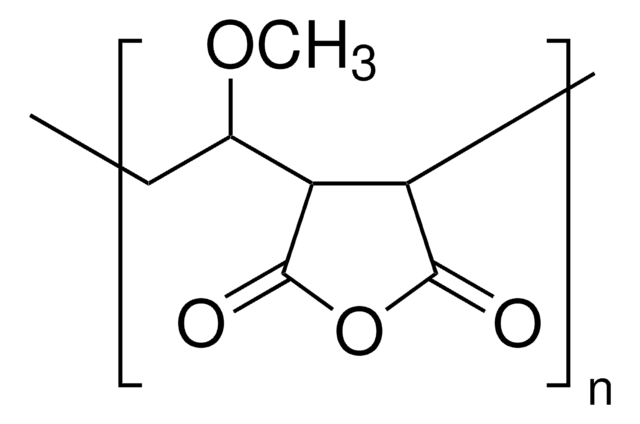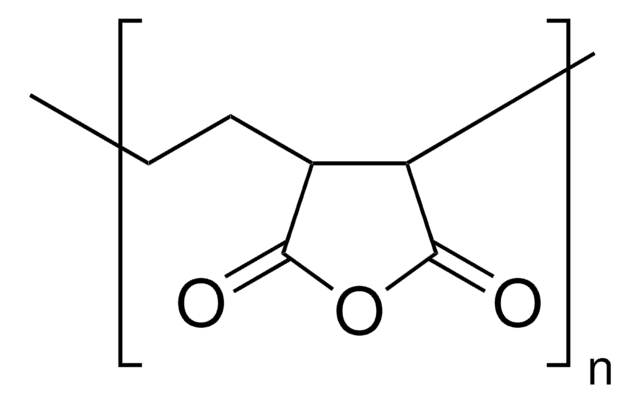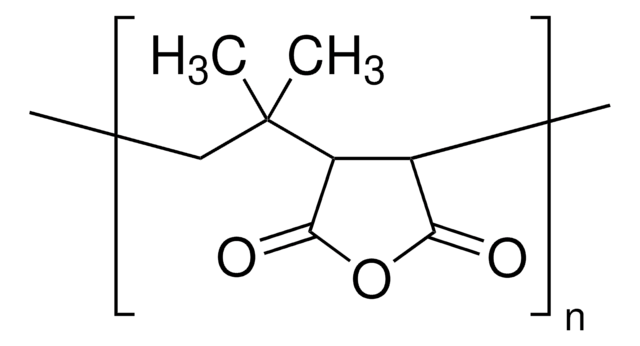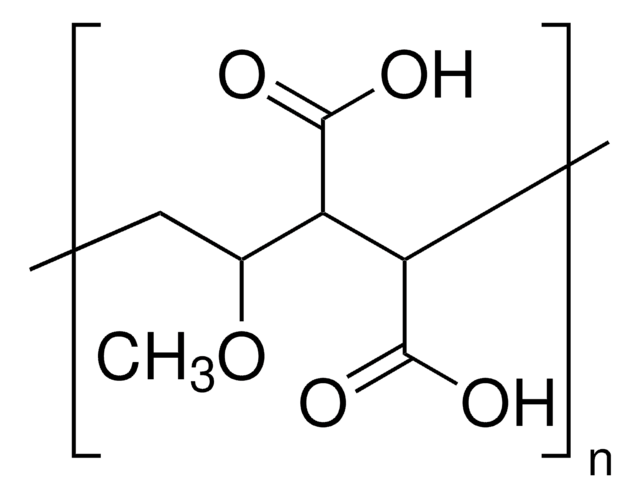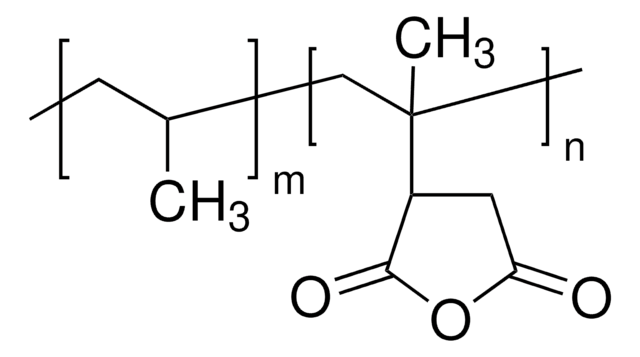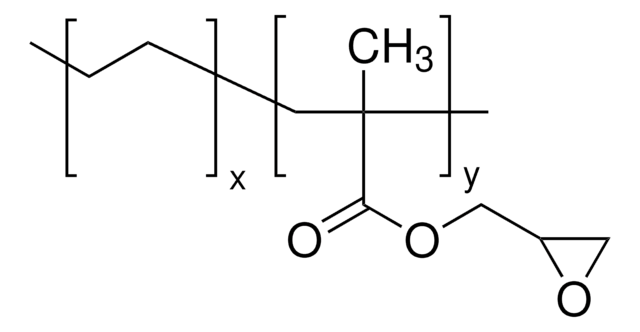416320
Poly(methyl vinyl ether-alt-maleic anhydride)
average Mw ~1,080,000, average Mn ~311,000
Synonyme(s) :
maleated copolymer, maleated polymer, maleic copolymer
About This Item
Produits recommandés
Forme
powder
Niveau de qualité
Poids mol.
average Mn ~311,000
average Mw ~1,080,000
Impuretés
<2% benzene
Solubilité
H2O: soluble (upon hydrolysis)
organic solvents: soluble
InChI
1S/C4H2O3.C3H6O/c5-3-1-2-4(6)7-3;1-3-4-2/h1-2H;3H,1H2,2H3
Clé InChI
UPBDXRPQPOWRKR-UHFFFAOYSA-N
Vous recherchez des produits similaires ? Visite Guide de comparaison des produits
Catégories apparentées
Application
- To prepare antimicrobial hydrogels with good mechanical strength, adhesiveness to the skin, and excellent swelling ability. For example, autoclaved mixtures of P(MVE-MA) and PVA (polyvinyl alcohol) can inhibit bacteria growth against Staphylococcus aureus.
- As an electrolyte additive for stabilizing the interface of high-voltage layered Li-rich oxides (LLROs). P(MVE-MA) can absorb more H2O from the electrolyte and suppress the oxidative decomposition of the electrolyte.
- To functionalize electrospun PVA nanofibers for protein adsorption. These modified nanofibrous membranes can be used for protein purification.
- To synthesize separator membranes with good ionic conductivity. These membranes keep the positive and negative electrodes apart and prevent electrical short circuits.
Mention d'avertissement
Danger
Mentions de danger
Conseils de prudence
Classification des risques
Carc. 1A - Eye Irrit. 2 - Muta. 1B - Skin Irrit. 2 - STOT RE 2
Organes cibles
Blood
Code de la classe de stockage
6.1C - Combustible acute toxic Cat.3 / toxic compounds or compounds which causing chronic effects
Classe de danger pour l'eau (WGK)
WGK 3
Point d'éclair (°F)
Not applicable
Point d'éclair (°C)
Not applicable
Faites votre choix parmi les versions les plus récentes :
Déjà en possession de ce produit ?
Retrouvez la documentation relative aux produits que vous avez récemment achetés dans la Bibliothèque de documents.
Notre équipe de scientifiques dispose d'une expérience dans tous les secteurs de la recherche, notamment en sciences de la vie, science des matériaux, synthèse chimique, chromatographie, analyse et dans de nombreux autres domaines..
Contacter notre Service technique